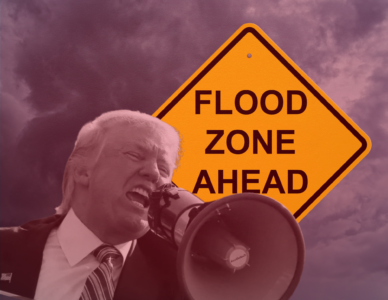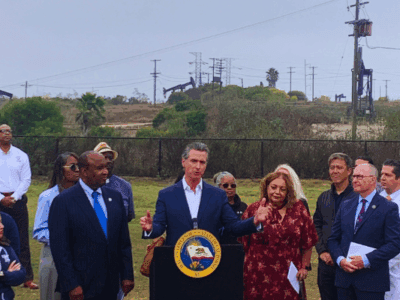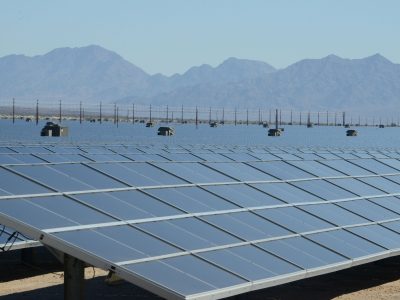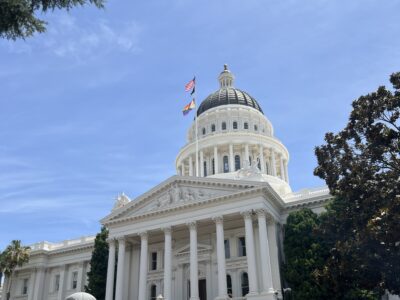What Happens If EPA Revokes the Endangerment Finding?
The action would mean full-blown warfare against all things climate.
 We are likely to learn next week if the Trump Administration will eviscerate the most important climate regulations the Biden Administration issued over the last four years. Under Trump’s “Unleashing American Energy” Executive Order, EPA Administrator Lee Zeldin is supposed to recommend by February 19 whether to reverse the central basis for much of the U.S.’s climate policy: a finding under the Clean Air Act that greenhouse gases endanger public health and welfare. The EO states that:
We are likely to learn next week if the Trump Administration will eviscerate the most important climate regulations the Biden Administration issued over the last four years. Under Trump’s “Unleashing American Energy” Executive Order, EPA Administrator Lee Zeldin is supposed to recommend by February 19 whether to reverse the central basis for much of the U.S.’s climate policy: a finding under the Clean Air Act that greenhouse gases endanger public health and welfare. The EO states that:
Within 30 days of the date of this order, the Administrator of the EPA, in collaboration with the heads of any other relevant agencies, shall submit joint recommendations to the Director of OMB on the legality and continuing applicability of the Administrator’s findings, “Endangerment and Cause or Contribute Findings for Greenhouse Gases Under Section 202(a) of the Clean Air Act,”
It is obvious, of course, that greenhouse gases emitted from sources regulated by the Clean Air Act endanger public health and welfare. The science could not be clearer that greenhouse gas emissions have already led the earth to warm — so much so that it now appears we have breached the 1.5 C limit the global community committed to in the Paris Agreement, adopted in 2015. We are seeing the effects of climate change on the ground and across the globe in the form of hotter temperatures, more frequent drought, more intense flooding, fiercer hurricanes, and more intense wildfires,
The science is so strong about the connection between greenhouse gas emissions and climate change that the Environmental Protection Agency found way back in 2009 that greenhouse gases endanger public health and welfare. But as we know, a commitment to science is not a hallmark of the Trump Administration. A commitment to the fossil fuel industry is. And the consequences of reversing the endangerment finding will decimate EPA’s regulations.
First, some background. The Clean Air Act tasks EPA with regulating “pollutants” from numerous sources. In 2007, the Supreme Court held in Massachusetts v EPA that the term pollutant includes the greenhouse gases that are warming the globe. It also held that EPA had to make a determination about whether pollutants emitted from cars and trucks endanger public health and welfare. In 2009, EPA issued its endangerment finding.
The endangerment finding didn’t just lead to greenhouse gas standards for cars and trucks. The word “endangerment” is used in other sections of the Clean Air Act too, and, of course, greenhouse gases are pollutants under the Act. That means that almost all of EPA’s major regulations to cut greenhouse gases are issued under the CAA, including regulations to cut emissions from power plants and to regulate methane from oil and gas operations in addition to rules regulating emissions from light duty vehicles (cars and SUVs) and medium and heavy duty trucks.
What would lead the Administration to overturn the endangerment finding? One obvious reason may be simply to raise more havoc — part of the Administration’s overall strategy to flood the zone — and to “own” the libs. And Project 2025 has the endangerment finding in its sights. It calls on the Administrator to “establish a system, with an appropriate deadline, to update the 2009 endangerment finding.” Updating can really only mean one thing: to overturn it. The head of Trump’s first term EPA transition team — longtime climate denier Myron Ebell — is also a champion of undoing the finding.
If the Administration were to reverse the endangerment finding, greenhouse gases would no longer need to be regulated under the Clean Air Act. Presumably, EPA would then simply move to revoke all of Biden’s major climate rules regulating cars, trucks, power plants, and oil and gas operations. As Joe Goffman, former Assistant Administrator for Air and Radiation under President Biden, told Politico, recently, “taking away the 2009 endangerment finding would really make it almost a virtual formality to take down all the greenhouse rules for CO2 and methane,”
Whether EPA would follow the same process to overturn the endangerment finding that it did when the agency made the finding — issuing a proposed finding first, holding public hearings and taking public comment — is unclear. Process has not been a hallmark of Trump’s first term or this one. But if EPA failed to do so it would clearly be sued for failing to follow proper procedure.
Even if the agency followed proper procedure, EPA will be sued on the substance if it overturns the endangerment finding. And it should lose in court. The science linking greenhouse gases emitted from all of the sources EPA is currently regulating is overwhelming. The D.C. Circuit Court of Appeals has upheld the endangerment finding. But science and law notwithstanding, the Supreme Court is the most anti-environmental court in the modern era. Moreover, the majority that decided Massachusetts v. EPA is long gone. John Roberts, Samuel Alito and Clarence Thomas all dissented in the case, including on the grounds that greenhouse gases aren’t pollutants under the Clean Air Act. As a judge on the D.C. Circuit Court of Appeal, Brett Kavanaugh made his disagreement with Mass v. EPA well known. It’s hard to imagine Neil Gorsuch disagreeing with his conservative brethren. One can imagine a majority of the Court using a case involving the endangerment finding to revisit and overrule Mass v EPA.
But the Project 2025 architects, Myron Ebell, and other climate deniers should perhaps be careful what they wish for. Under current Supreme Court doctrine, industry is protected from federal common law nuisance lawsuits for climate change harms. In AEP v. Connecticut, the Court held that states and other plaintiffs couldn’t bring climate nuisance cases against polluters under federal doctrine because the polluters were already subject to regulation under the Clean Air Act. If the Act no longer covers greenhouse gas emissions, that protection from nuisance cases disappears.
Upending the endangerment finding might also allow states to regulate greenhouse gases from cars and trucks. The Clean Air Act prohibits states from issuing vehicle standards for emissions that are subject to the Act. California, of course, can regulate emissions but it needs EPA permission to do so. If greenhouse gases aren’t subject to the Clean Air Act, could states regulate them independently?
If the Administration decides not to overturn the endangerment finding, climate regulations will hardly be safe from attack. EPA will still withdraw and replace the Biden regulations with much weaker versions. But federal power to regulate will remain intact and the Administration will be forced to issue regulations that at least plausibly comply with the law. If the endangerment finding is upended, the havoc will happen sooner and more sweepingly. Either way, though, it’s going to be a long four years.
Reader Comments
7 Replies to “What Happens If EPA Revokes the Endangerment Finding?”
Comments are closed.







Atmospheric CO2 does not cause adverse health effects and never was an actual air “pollutant”. It was falsely misclassified as a pollutant in order to regulate the climate.
go to bed, jim.
Criteria air pollutants such as NOx, SOx, Benzene, Chlorine, etc. all cause adverse human health effects. Atmospheric CO2 was improperly classified as a criteria air pollutant despite the fact that it has no adverse health effects.
CO2 has always been a fake air pollutant which was concocted for the purpose of fabricating the fake climate crisis.
Thankfully those years of endless lies and public deception are now behind us. May God Bless America !!!
Hard to see how this could be upheld now that chevron has been overruled.
Here’s a very accessible presentation by one of America’s leading climate scientists explaining why “CO2 is a pollutant…that has a profound impact on our health in so many ways”: https://www.youtube.com/watch?v=wfq72W3RP_o
What theEPA cannot do with any objective evidence, is connect the existence of human disease directly to climatic conditions related to CO2 emissions.
Therefore, since there is no direct correlation of disease to emission of CO2, the 2009 finding 16 years hence, has no structure to support its initial claims of endangerment to health and welfare.
Without the correlation existing over a 16 year timespan, its likely that the Trump administration will succeed in rejecting the 2009 proclamation of endangerment, as having valid merit or conclusion.
Without evidentiary validity, the 2009 endangerment proclamation would fail at law, when challenged by just about anyone. Therefore, its likely to be dismissed by the EPA, and rule makings under its shadow expunged.
What about the codification in the Inflation Reduction Act (aka the CAA amendments of 2022) that GHGs are pollutants under the CAA? I realize that they can still revoke the endangerment finding by arguing those pollutants don’t endanger health and welfare, but does it change the calculus at the Supreme Court? You note Roberts (and Alito and Thomas, though I don’t expect them to change tune) dissented to Mass v EPA in part b/c GHGs weren’t pollutants. Could the IRA provisions change his vote, at least?